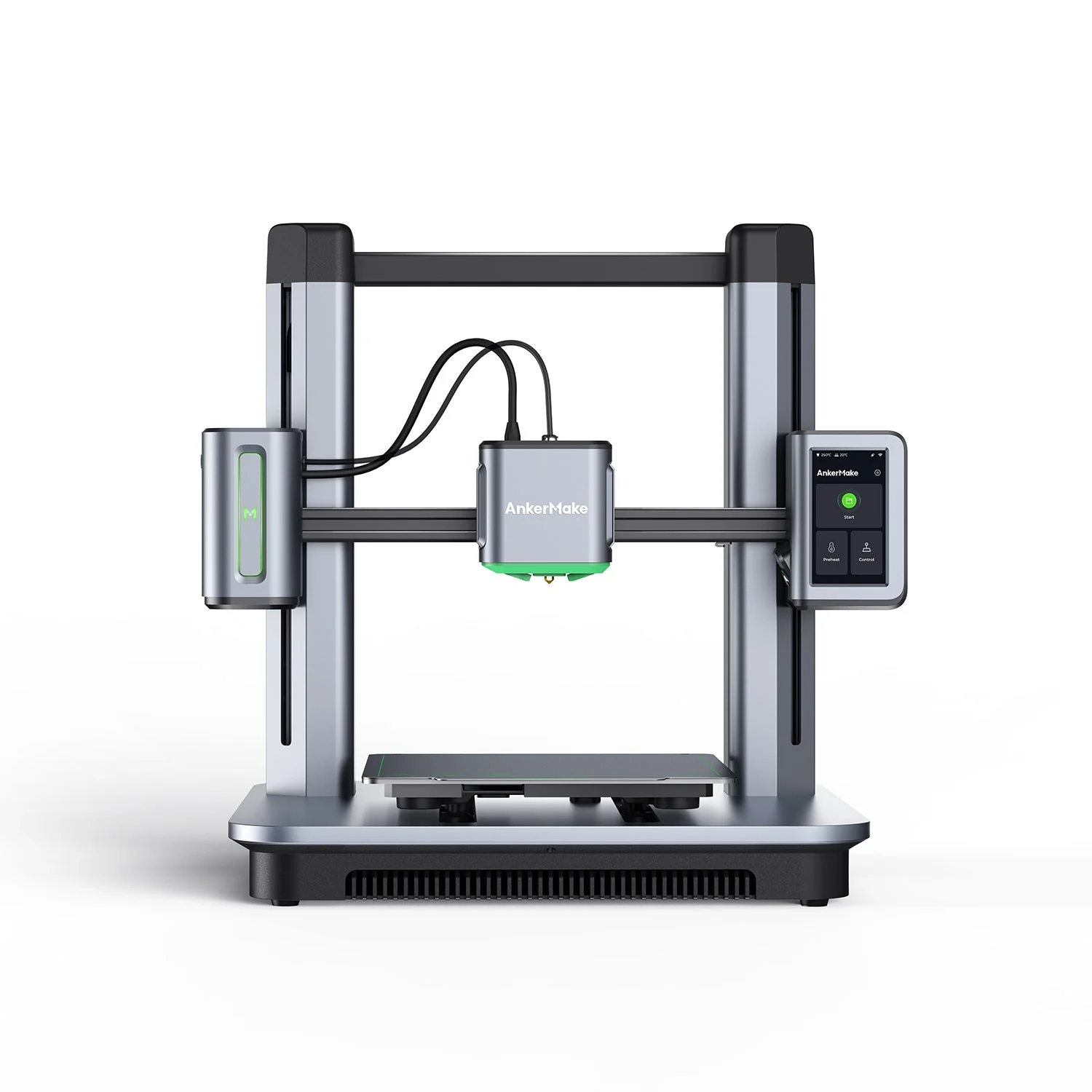Compare M5 vs K1 Max
Comparison between the best 3D printers
Choose the best 3D printer at the best price. The cheapest 3D printers are here.
Buy a 3D printer here with 3D Fila.
 |
 |
|
| Model | M5 |
K1 Max[BUY K1 Max] |
| Printing Material | Filament | Filament |
| Buy Filament for AnkerMake M5 | Buy Filament forCreality 3D K1 Max | |
| Estimated price | $497,00 | $1300,00 |
| Manufacturer | AnkerMake | Creality 3D |
| Release Year | 2023 | 2023 |
| Print Volume [mm] | 235x235x250 | 300x300x300 |
| Printer Size [mm] | 502x438x470 | 435x462x526 |
| Weight [kg] | 12,6 | 18 |
| Power Loss Recovery | YES | YES |
| Enclosed printer | NO | YES |
| Bed Leveling | Automatic | Automatic |
| Filament End Sensor | YES | YES |
| Bed type | Heated | Heated |
| Power supply system | Direct Drive | Direct Drive |
| Standard nozzle | 0,4 | 0,4 |
| Maximum Nozzle Temperature [°C] | 260 | 300 |
| Maximum Bed Temperature [°C] | 100 | 100 |
| Maximum printing speed [mm/s] | 500 | 600 |
| Filament holder | YES | YES |
| Camera for supervision | YES | YES |
| Recommended filaments | PLA, PETG, ABS | ABS, PLA, PETG, TPU, PA, ASA, PC, PLA-CF, PA-CF, PET-CF |
| Recommended slicers | AnkerMake Studio (macOS, Windows), Simplify3D, Ultimaker Cura, PrusaSlicer | Creality Print, Cura, Simplify, Slic3r, IdeaMaker e outros |
| Maximum Resolution [mm] | 0,1 | 0,1 |
| Processor | ||
| Display | Touchscreen 4,3'' | Display touchscreen 4,3'' |
| Power Supply | 350 W | |
| Connectivity | Wi-Fi, USB-C, OTA Upgrade | USB / Wi-Fi / Ethernet |
| Operating systems | Windows, Linux, Macbook | Windows, Mac, Linux |
| Date of registration in the system | 2024-07-08 | 2023-12-01 |
| Release date | 2023 | 2023 |
| Extra features | The AnkerMake M5 printer stands out for its impressive print speed, reaching up to 500mm/s. It features AI print monitoring, an integrated camera for creating timelapses, auto-leveling bed with pressure sensor, direct extruder, flexible PEI-coated build plate, and Wi-Fi and USB-C connectivity. Assembly is quick and easy, and the printer is designed to deliver high print quality and ease of use. | The Creality K1 Max stands out as a fast Core XY 3D printer with a large build volume of 300 x 300 x 300 mm. It is fully enclosed and equipped with AI sensors to prevent print failures. This model has a smooth and flexible PEI build platform, and uses an automatic leveling system with LIDAR, as well as a filament run-out sensor. LAN, Creality Cloud and USB Flash Disk connectivity are available, as well as a 4.3-inch touchscreen interface. The K1 Max is robust, weighing in at 18 kg, and includes an AI camera and limited version of the Klipper firmware. Its motion system is solid and the printer is efficient with high-temperature filaments, but it is not silent. Assembly is 99% complete, requiring only minor adjustments before use. |
| Support for multiple colors and materials (AMS and CFS) | NO | NO |
Notes * |
||
| Cost-benefit | 7 / 10 | 7 / 10 |
| Hardware | 4 / 10 | 4.8 / 10 |
| Tela | . | . |
| Print volume | 3 / 10 | 4 / 10 |
| Performance | 4 / 10 | 5 / 10 |
| [BUY K1 Max] |
Conclusion |
| In conclusion, the AnkerMake M5 and Creality K1 Max offer distinct advantages catering to different user needs in the realm of 3D printing. The M5 emerges as an affordable option with exceptional speed capabilities, ideal for users prioritizing rapid production and ease of use. Its features, such as AI print monitoring and a flexible build plate, make it suitable for beginners and hobbyists. On the other hand, the K1 Max commands a higher price point but compensates with a significantly larger build volume and enhanced capabilities for more demanding projects. Its enclosed design allows for better temperature control, enabling the use of a broader range of high-temperature filaments. The presence of advanced AI sensors and features tailored for serious 3D printing enthusiasts signifies its robustness and reliability. Ultimately, the choice between the two models hinges on individual needs—budget considerations, print volume requirements, and the types of materials you wish to use. For those seeking high-speed printing in a compact package, the M5 is an excellent option. Conversely, for users focused on larger prints and material versatility, the K1 Max is the preferable choice despite its higher investment. Both printers demonstrate solid performance and quality, ensuring that users receive great value for their money regardless of their selection. |

